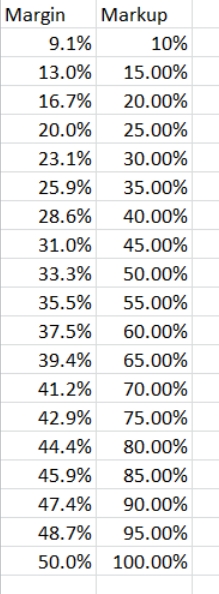Markup vs Margin: Understanding the Difference for Retail Success
In your shop, suppliers will quote you "markup" and a "margin". Markup is your profit added to the cost. I always think it's UP on cost. Margin is the profit percentage of the suggested sale price.
They are different. Suppliers often prefer to use markup, I think, partly because the number sounds more appealing and makes their profit seem more favourable. For instance, telling you that you get a 33% markup sounds good, but being told it's a rather ordinary 25% margin does not seem so good.

How to Calculate Them
Your POS System will do it automatically.
Here is the theory. Say you sell an item for $20, and it costs you $15 to buy. Your profit is $5.
Working Out Markup
Markup Formula: (Profit ÷ Cost) × 100
Using our example: ($5 ÷ $15) × 100 = 33%
It means that for every $100 you buy in stock, you make $33 profit.
Working Out Margin
Margin Formula: (Profit ÷ Sale Price) × 100
Using our example: ($5 ÷ $20) × 100 = 25%
It means you keep 25 cents out of every dollar you earn.
Why Margin Matters More
For running your business day-to-day, margin is the better number to use. Here's why.
Your accountant uses margin when looking at your financial reports. When you do your tax paperwork or business statements, margin is what is commonly quoted.
Margin gives you a more accurate picture of your business's health. It shows what you actually keep from each sale, which helps you make smarter decisions about pricing and buying stock.
The worst thing to do is to mix them in use. In your shop, use only one; otherwise, you will get confused. You should use margins throughout your whole shop.
Set your POS System to do that.
Quick Conversion Guide
When suppliers quote you a markup, you can convert it to a margin to see what you'll really make. Here's a handy table.
[Conversion table image would be placed here]
Notice how markup percentages are always higher than margin percentages for the same profit? That's why suppliers prefer quoting markup.
Bottom Line
Use margin only for all your pricing decisions.


